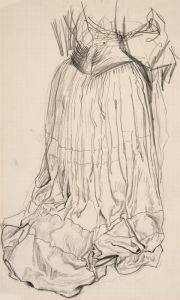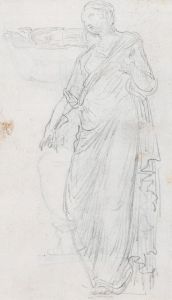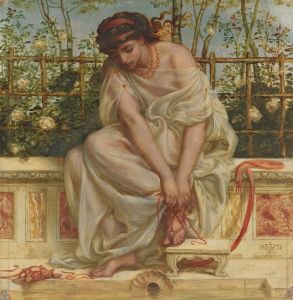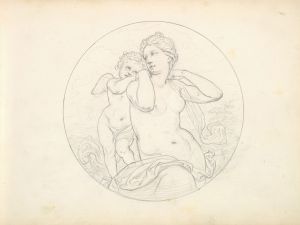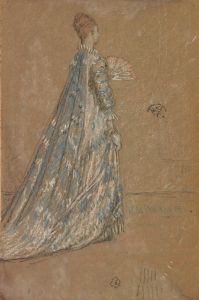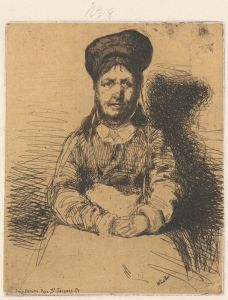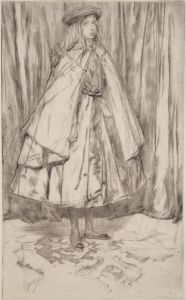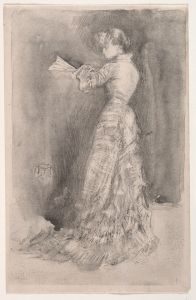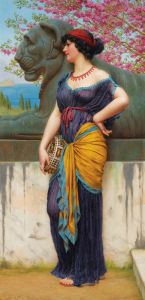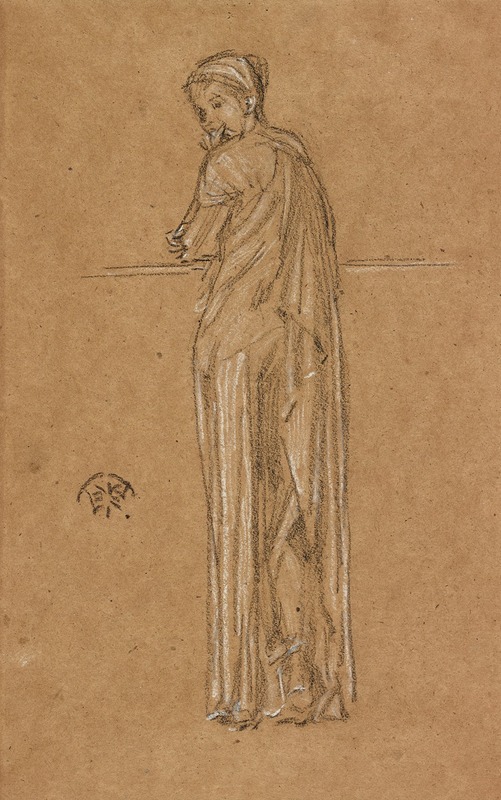
Draped Figure Standing
A hand-painted replica of James Abbott McNeill Whistler’s masterpiece Draped Figure Standing, meticulously crafted by professional artists to capture the true essence of the original. Each piece is created with museum-quality canvas and rare mineral pigments, carefully painted by experienced artists with delicate brushstrokes and rich, layered colors to perfectly recreate the texture of the original artwork. Unlike machine-printed reproductions, this hand-painted version brings the painting to life, infused with the artist’s emotions and skill in every stroke. Whether for personal collection or home decoration, it instantly elevates the artistic atmosphere of any space.
James Abbott McNeill Whistler, an American artist active during the late 19th century, is renowned for his contributions to the Aesthetic Movement and his influence on the art world through his innovative approach to painting and design. One of his works, "Draped Figure Standing," exemplifies his unique style and artistic philosophy. However, specific details about this particular painting, such as its creation date, current location, and historical context, are not widely documented or available in public records.
Whistler's artistic career was marked by his pursuit of beauty and harmony in art, often prioritizing aesthetic qualities over narrative content. He was known for his use of color and composition to evoke mood and atmosphere, a technique that is likely reflected in "Draped Figure Standing." Whistler's works often feature a subtle interplay of light and shadow, with an emphasis on the arrangement of forms and the use of a limited color palette to create a sense of balance and tranquility.
Throughout his career, Whistler was influenced by various artistic movements and styles, including Realism, Impressionism, and Japanese art. His interest in Japanese aesthetics, particularly the use of space and simplicity, can be seen in many of his works. This influence may also be present in "Draped Figure Standing," as Whistler often incorporated elements of Japanese design into his compositions, such as asymmetry and an emphasis on negative space.
Whistler's approach to portraiture and figure painting was distinctive for its focus on the sitter's presence and the overall composition rather than detailed realism. He often depicted his subjects with a sense of elegance and poise, using drapery and clothing to enhance the visual impact of the figure. This technique allowed him to explore the interplay between the figure and the surrounding space, creating a harmonious and cohesive image.
Despite the lack of specific information about "Draped Figure Standing," it is reasonable to assume that the painting embodies Whistler's artistic principles and his dedication to creating works that transcend mere representation. His paintings are celebrated for their ability to convey emotion and atmosphere through subtle visual cues, making them enduring examples of his artistic legacy.
Whistler's influence on the art world extends beyond his paintings. He was a prominent figure in the Aesthetic Movement, which advocated for "art for art's sake" and emphasized the importance of beauty and visual pleasure in art. His ideas and works have inspired generations of artists and continue to be studied and appreciated for their innovative approach to composition and design.
In summary, while specific details about "Draped Figure Standing" by James Abbott McNeill Whistler are not readily available, the painting likely reflects the artist's commitment to aesthetic beauty and his mastery of composition and form. Whistler's legacy as a pioneering figure in the art world endures, with his works continuing to captivate audiences and influence artists worldwide.





